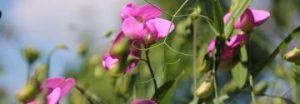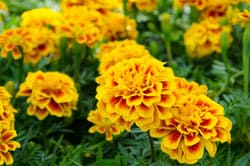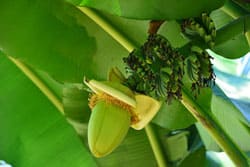
The definitions below are especially useful for R2101. The plant examples given below are taken from the examiners’ comments on various past exam papers so can be considered safe options. Students tell us that they often find choosing good plant examples confusing because plants may be classified in different ways by different sources. In addition, while we might grow a plant as an annual here in the UK it might actually be a perennial in botanical terms. The RHS examiners understand that this is an issue and will account for it when marking your paper; for example, on one exam paper they note that ‘Annuals which are botanically perennials but are treated as annuals horticulturally, e.g. Begonia semperflorens and Pelargonium zonale were also accepted.’
Hardy Annual
A hardy annual is a plant that lives for one year/completes its life cycle in one year. Hardy annuals are sown outside in March and can survive/withstand frost and temperatures below -5oC.
Examples for the exam include: Calendula officinalis, Lathyrus odoratus (main picture above), Helianthus annuus, Nigella damascena.
Half-Hardy Annual

A half-hardy annual is a plant that lives for one year/completes its life cycle in one year. It can survive in temperatures down to -5oC or is sown under protection from frost and planted when all danger of frost is past. Examples:
Tagetes patula (left), Nicotiana alata, Ageratum houstonianum, Ocimum basilicum, Phaseolus vulgaris.
Tender Perennial

A tender perennial is a plant that lives for more than two years. It cannot survive temperatures below 1oC and cannot survive frost. Tender perennials need to be in a frost-free environment over winter or put outside when the danger of frost has passed. Examples:
Musa basjoo (left), Canna indica.
Biennials
A biennial is a plant that completes its entire life-cycle in two years. It has vegetative growth (leaves, stems and roots) in its first year and in the second year it reaches maturity and flowers, sets seed and dies. Examples:
Dianthus barbatus, Digitalis purpurea, Echium vulgare, Myosotis sylvatica.
